Friday, 7th January 2022
Vaccination: Collective good versus Individual Liberty
In News
Australian authorities barred tennis star Novak Djokovic from entering the country and cancelled his visa because he was not fully vaccinated for COVID-19.
Ethical and Moral Matter of the Mandatory COVID Vaccination
Whether one should get vaccinated is a moral issue because it affects others, and in a couple of ways.
- First, effective vaccines are expected to decrease not only rates of infection but also rates of virus transmission. This means that getting the vaccine can protect others and contribute to the population reaching herd immunity.
- Second, high disease prevalence allows for more genetic mutation of a virus, which is how new variants If enough people aren’t vaccinated quickly, new variants may develop that are more infectious, are more dangerous or evade current vaccines.
Hence, the straightforward ethical argument says: Getting vaccinated isn’t just about you. One has the right to take risks with one’s own safety. But as the British philosopher John Stuart Mill argued in 1859, one’s freedom is limited by the harm it could do to others.
- In other words, one does not have the right to risk other people’s health, and so one is obligated to do one’s part to reduce infection and transmission rates.
Ethics of Refusing to get vaccinated: Individual action, collective good
- Refusing to be vaccinated does not violate Mill’s harm principle, as it does not directly threaten some particular other with significant harm. Rather, it contributes a very small amount to a large, collective harm.
- Since no individual vaccination achieves herd immunity or eliminates genetic mutation, it is natural to ask: Could we really have a duty to make such a very small contribution to the collective good?
- For instance, in the climate ethics it has been argued that individual actions are also inadequate to address the threat of climate change. Hence, there is simply no duty to act if one’s action won’t make a meaningful difference to the outcome.
However, there are supportive arguments that individuals must not contribute to collective harms.
- One strategy is to argue that small individual actions may actually make a difference to large collective effects, even if it’s difficult to see.
- For instance, One’s chance of saving a life by getting vaccinated and reducing infection or transmission is very small, but saving a life is very valuable. The expected value of the outcome, then, is still high enough to justify taking it to be a moral requirement.
- Another strategy concedes that individual actions don’t make a meaningful difference to large, structural problems, but this doesn’t mean morality must be silent with regard to those actions.
- Also, disengaging unvaccinated people from the public places merely refer to the differential treatment of people based on their COVID or vaccination status. The differential treatment is not, in itself, discriminatory.
The contours of obligation
- There is yet another challenge in justifying an obligation to get vaccinated, which has to do with the very nature of obligations. Obligations are requirements on actions, and, as such, those actions often seem demandable by members of the moral community.
- The relevant question here, then, is: Are there moral grounds to demand another person get vaccinated? Is getting vaccinated intimate? While it may not appear so, it involves having a substance injected into the body, which is a form of bodily intimacy. Hence, it seems inappropriate to demand of someone, as individuals have unilateral moral authority over what happens to their bodies.
- However, even if members of the moral community don’t have the standing to demand that others vaccinate, they are not required to stay silent; they may ask, request or entreat, based on very good reasons. And of course, no one is required to interact with those who decline.
Conclusion: Indeed, there is overwhelming reason to get vaccinated. But reasons – even when overwhelming – don’t constitute a duty, and they don’t make an action demandable. Hence, rather than discriminating against the unvaccinated people, a much better way, is to engage others rather than demand from them, even if the force of reason ends up clearly on one side.
Sources:
Securing consumer Internet of Things (IoT)
In News
Ministry of Communications has released report titled “Code of Practice for Securing Consumer Internet of Things (IoT)”
What is Internet of Things (IoT)?
- The Internet of Things (IoT) describes the network of physical objects—“things”—that are embedded with sensors, software, and other technologies for the purpose of connecting and exchanging data with other devices and systems over the internet. These devices range from ordinary household objects to sophisticated industrial tools.
- As per the projections, there may be 26.4 billion IoT devices in service globally by 2026. Out of this approximately 20% will be on cellular technologies.
- As per the National Digital Communication Policy (NDCP) 2018, it is expected that around 60% of 5 billion i.e. 3 billion connected devices may exist in India by 2022.
Key guidelines of the report?
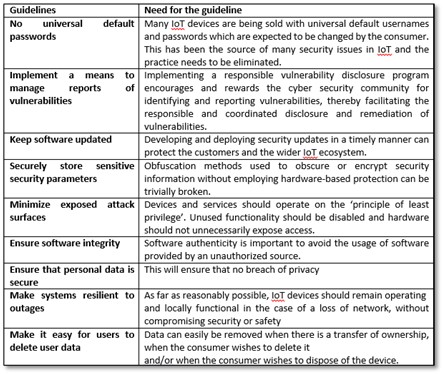
What are the major Challenges related to IoT?
- Classification of different devices depending upon the risk associated with different applications is a major challenge.
- Risk of attack by a variety of malicious parties to IoT devices, services & software, and the communication channels that connect them.
- Timely detection of any discontinuity that may interrupt critical services/infrastructure including hospitals, data centres etc. is another concern.
- Securing infringement of privacy especially when there is no uniform data privacy law.
- Ineffective security controls in securing of data may risk leak by malicious actors taking advantage of poor design.
Sources:
New Fly Ash Disposal Rules
In News
The Union Ministry of Environment, Forest and Climate Change (MoEFCC) has notified the latest amendments to the Environment (Protection) Act for better monitoring and utilisation of fly ash by coal-based thermal power plants (TPPs) in the country.
About the News
- The new notification will replace the 1999 notification that had originally set up rules for fly ash utilisation.
- It will also supersede the various amendments to the 1999 notification made in 2003, 2009 and 2016, which have all sought to manage the generation of fly ash.
- The regulation intends to “bring out a comprehensive framework for ash utilisation including a system of environmental compensation based on polluter-pays principle”.
Key Provisions
- 100% Utilization: Now, the TPPs also have to achieve 100 per cent fly ash utilisation in three years, instead of the earlier five years. Besides, the utilisation levels for the TPPs should not decline below 80 per cent.
- However, the first three-year cycle is extendible by another one year or two years for power plants with ash utilisation percentage in the range of 60-80 per cent or less than 60 per cent, respectively.
- The plants that fail this will be have to pay the Central Pollution Control Board (CPCB) Rs 1,000 per tonne of unutilised ash.

- Acknowledgement of Legacy Ash: “Legacy ash”(the build-up of fly ash by thermal power plants over decades) must be utilised over a period of 10 years from April 2022 onwards.
- Besides, the compliance audit for ash disposal by the TPPs and their user agencies will be conducted by auditors, authorised by CPCB. The audit report will be submitted to CPCB and the concerned state pollution control board (SPCB) by November 30 every year and action against non-compliant TPPs will be taken within 15 days of receiving the report.
- The notification also mandates that all power plants share the real-time data on ash availability with CPCB. Measures for ash utilisation by new thermal plants and all mines have also been outlined in the draft, along with ash pond maintenance guidelines.
- It lists “the only” ways in which the fly ash can be utilised, which include:
- Manufacturing of bricks, tiles and cement,
- Construction of roads,
- Export to other countries.
- Filling of low-lying areas, empty mines, and
- Agriculture in a controlled manner based on soil testing.
- Utilising compensation money: The compensation money collected by the CPCB for unutilized ash will be used for its safe disposal as well as research on ash-based products.
Concerns related to the amendments
- Ecological Consequence: The utilization of Flyash for filling of low-lying areas can lead to severe ecological consequences.
- Decadal deadline: A 10-year deadline to comply with 100% utilisation of legacy ash eases the legal burden of compliance but allows for illegal dumps of overloaded ash dykes to continue which likely has a high risk of accidents and contamination.
- Fly Ash generation unaddressed: The notification didn’t address the issue of fly ash generation, which is the underlying cause for build-up and environmental damage.
Source:
- New rules on fly ash disposal a ‘positive step’, but experts say health, ecology risks remain
- India’s new directives on sustainable disposal of fly ash may do more harm than good
- Govt notifies norms for fly ash utilisation by coal-fired power plants
Image Source:
Galileo Discovers Jupiter’s Moons
On January 7, 1610, Italian astronomer Galileo Galilei discovered, using a homemade telescope, four moons orbiting the planet Jupiter. Today, Jupiter’s four largest satellites—Io, Europa, Ganymede, and Callisto—are named the Galilean Moons in honor of their discoverer. The Catholic Church ultimately found Galileo "gravely suspect of heresy" for supporting the idea that the Earth revolved around the sun. He remained under house arrest for the rest of his life. Galileo’s discovery provided evidence for the Copernican understanding of the universe. This was the idea that everything in existence did not, indeed, move around Earth. His discoveries led to the development of modern astronomy.

Source:
Suspension of Telecom Services/Internet and its Impact
In News
The Standing Committee on Communication and Information Technology has published its report on ‘Suspension of telecom services/internet and its impact’.
Introduction- A background Note on Internet Shutdowns
- India ranks first globally in shutting down the internet hence called as the “internet shutdown capital” of the world.
- The internet shutdowns tracker maintained by SFLC.in shows that in the last 9 years, there have been 550 shutdowns and over 50% of them were imposed after 2017.
- Internet suspension is governed by Temporary Suspension of Telecom Services (Public Emergency or Public Safety) Rules, 2017, notified under the Indian Telegraph Act, 1885. Prior to notification of these rules the state government was allowed to suspend the internet through section 144 of the CrPC.
- Yet internet shutdowns remain the norm and not the exception, and continue to be imposed even if there is no apparent need. Recently in Udaipur and Jaipur, the internet was suspended to conduct exams, and in Haryana to clamp down on protests. Previously, in Jammu & Kashmir and Meghalaya internet was suspended without publishing the orders.

Key Considerations- the impacts of Internet Shutdown
- Economic Cost: India lost an estimated $3 billion between 2012 and 2017 due to shutdowns. Freelancers, small businesses, and the tourism industry were all especially hard hit. In 2020 alone, the internet was suspended for 8927 hours costing the country US$ 2.8 Billion.
- Cripples good governance: Internet Connectivity is of importance due to policy initiative of the Government to promote mobile banking, digital payments, financial inclusions, etc. In absence of telecom/internet connectivity, banking transactions using credit/debit card/UPI and internet banking get affected. Various service deliveries such as PDS etc. go down.
- Infringement of Human Rights: Around 42% shutdowns in 2020 directly impeded human rights by abusing freedom of assembly, election interference and infringement on freedom of press.
- Impacts Social Sector Services:
- The most unenviable impact of shutdowns reflects on the health industry. The sector is increasingly dependent on internet to record and maintain patient data and order medical equipment online. In complicated cases, doctors often consult peers via messaging apps like WhatsApp, and in the absence of internet, medical procedures can get disrupted.
- Moreover, shutdowns during the lockdown had a major impact on education. As all classes were being held online, an internet blackout impedes learning opportunities.
- Shutdowns also have a particularly adverse effect on women’s lives. In areas where women's presence in public spaces is already limited, having further lack of access to information is detrimental to their rights and freedoms.
What are the key observations and Recommendations made by the Standing Committee?
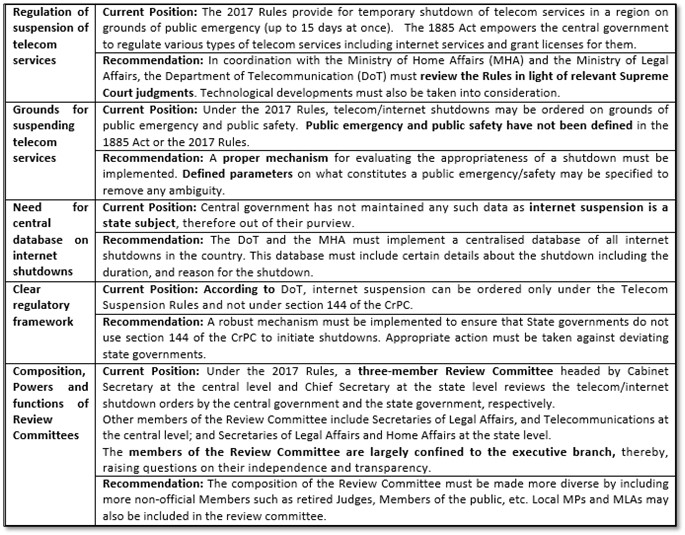
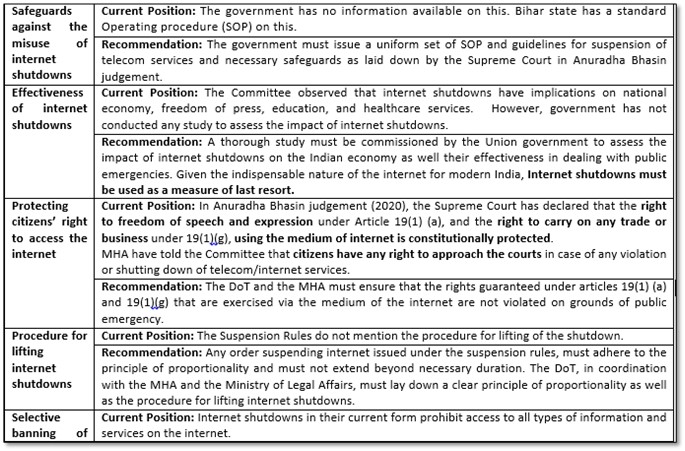
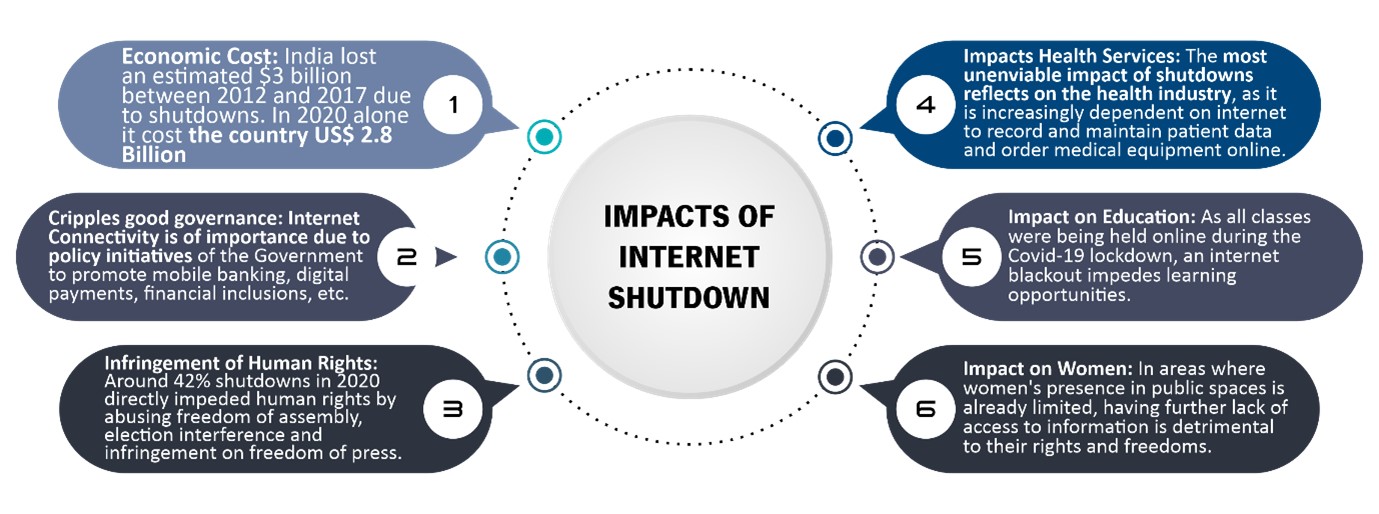
Conclusion: Internet shutdowns have far-reaching technical, economic, and human rights impacts. They undermine users’ trust in the Internet, setting in motion a whole range of consequences for the local economy, the reliability of critical online government services, and even for the reputation of the country itself. Policymakers need to consider these costs alongside security imperatives. Given the indispensable nature of the internet for modern India, Internet shutdowns must be used as a measure of last resort.
Question: India face the dichotomy of ever rising digital penetration along with frequent curtailment of internet. What explain this dichotomy? How can this dichotomy be resolved to benefit the Indian democracy?
Sources:
- SUSPENSION OF TELECOM SERVICES/INTERNET AND ITS IMPACT
- IT standing committees report internet shutdowns
- Concerned with frequent internet suspensions, Parliamentary Committee recommends an overhaul
- Suspension of Telecom Services/Internet and its Impact: Standing Committee Report Summary
- How internet shutdowns damage democracy
- Behind the great Indian Internet shutdown
- The SC’s order on Internet shutdown is wrong | Opinion
- Decoding India’s dubious distinction as world’s ‘internet shutdown capital’
- Why you should be more concerned about internet shutdowns
- Opinion | Why shutting down the internet is no longer an option
- Policy Brief: Internet Shutdowns
- Explained | How and why internet shutdowns impact economy?
- India's internet shutdowns function like 'invisibility cloaks'
10,000 Year Clock
This is image of the a giant 10,000-year clock inside a mountain in West Texas, USA. Once completed, the clock will stand 500 feet (152 meters) tall and will be powered by the Earth's thermal cycles. The project has been started in the year 2018 by Amazon founder, Jeff Bezos. The clock is designed to tick just once a year and chime once per millennium. Experts are blasting rooms out of the interior of the mountain in order to install steampunky piles of gears and flywheels. The giant clock is set to house five ‘room-sized anniversary chambers’ for the 1 year, 10 year, 100 year, 1,000 year, and 10,000 year anniversaries of the clock’s completion. The one-year anniversary chamber will hold a mock-up of the planets and the Earth's moon while the rest of the anniversary chambers will be left for future generations to create.

Source:
India to Surpass China in Ethanol Consumption by 2026
- Context: Ethanol demand has tripled in India between 2017 and 2021 as per recent IEA report.
- Ethanol is one of the principal Biofuel which is naturally produced by fermentation of sugars by yeasts and through petrochemical processes like ethylene hydration.
- Advantage of using Biofuel:
- Meets the Energy security & cuts down the cost of Oil import bill.
- Ethanol production in factories provides farmers with incentives.
- Reducing emissions of GHGs.
- India is expected to outshine China as the world’s third largest ethanol consumer after US and Brazil by 2026 as it accelerates the transformation towards a clean energy ecosystem.
- India in 2021 has brought forward its 20% ethanol blending target (current blending of ethanol with petrol is 8.5%) with gasoline from 2030 to 2025 and aims to start selling 20% blends in 2023.
- This is in the backdrop of India’s objective of becoming carbon neutral by 2070.
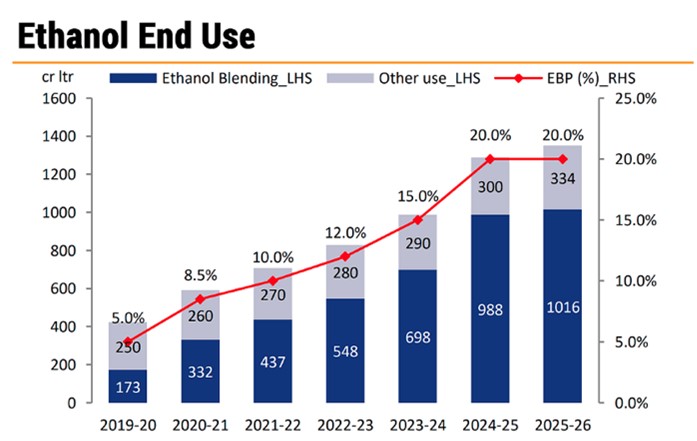
Source:
- India on track to surpass China as third largest ethanol consumer by 2026
- “India on track to surpass China as third-largest ethanol consumer by 2026”: IEA
- IEA
Image Source:
India votes in favour of UNSC Resolution
- Context: India has recently voted in favour of UNSC resolution to renew the mandate of Counter-Terrorism Committee Executive Directorate (CTED).
- CTED was established by the UNSC to assist the counter-terrorism committee (CTC) and coordinate the process of monitoring the implementation of resolution 1373 (2001).
- CTC carries out the policy decisions and conducts expert assessments of the 193 United Nations Member States.
- Resolution 1373 deals with implementation of several measures by countries to enhance their legal and institutional ability to counter terrorist activities at home, and around the world.
- India will be chairing the CTC for 2022 and will focus on making determined efforts to enhance the role of CTC for strengthening the multilateral response to counter terrorism thereby reaching the goal of zero tolerance for terrorism.
- It will also ensure that the response to the threat of terrorism remains unambiguous, undivided and effective.
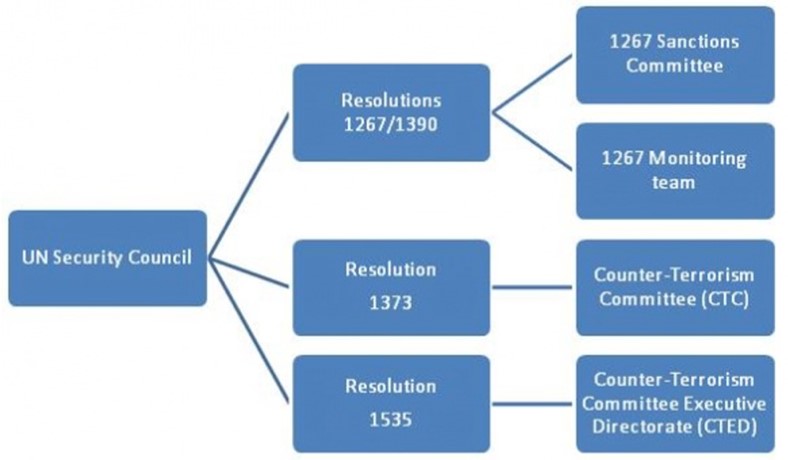
Source:
- India votes in favour of UNSC resolution to renew mandate of Counter-Terrorism Committee Executive Directorate
- India's envoy at UN: Tirumurti assumes Chair of Security Council Counter-Terrorism Committee for 2022
Image Source:
Crypto Index IC15
- Context: Crypto currency app Crypto Wire has recently launched India's first crypto currency index-IC15.
- The index will measure and monitor the performance of top 15 widely traded crypto currencies that are listed on crypto exchanges in the world.
- Currently, Bitcoin, Ethereum, Binance Coin and Solana occupy the top position.
- IC15 aims to enable market development by offering support to evaluate possibilities for better growth though which investors will become more aware of the crypto currency ecosystem.
- IC15 can be replicated for creating index-linked products such as index funds or exchange-traded funds (ETFs).
- Usually, the performance of a mutual fund scheme is assessed with reference to a benchmark, which could be a total return index of the Nifty or the Sensex.
- IC15 is the first index in India that can act as a benchmark of the underlying cryptocurrency market and the performance benchmark for fund managers.
- Added to this, robo-advisors, which provide financial advice with moderate to minimal human intervention, can use this index to create investment products at lower costs.
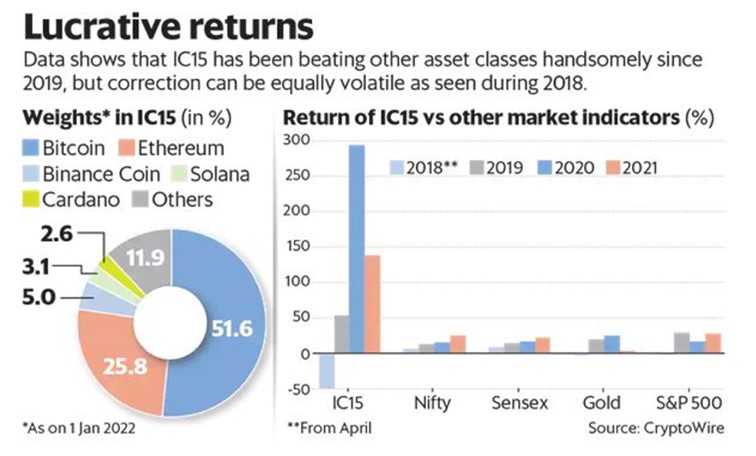
Source:
- Understanding IC15, India's first crypto index
- India's First Cryptocurrency Index Launched: How it Works, What it Means for Investors
Image Source:
Two-week state of emergency for Kazakhstan
- Context: Protests have escalated to violence in Kazakhstan due to rise in fuel prices.
- Kazakhstan is the ninth-largest country in the world which shares borders with Russia in the north and China in the east.
- This Central Asian Nation has extensive oil reserves and mineral wealth that make it strategically and economically important.
- However, the living condition of its population is poor in some parts of the country.
- The nation experienced a hike in the price of LPG gas that roughly doubled as the government moved away from price controls as part of its efforts to move towards a market economy.
- The country’s President has requested the intervention of the Collective Security Treaty Organization (CSTO) – an alliance made up of Russia, Armenia, Belarus, Kazakhstan, Kyrgyzstan and Tajikistan to bring the situation back to control.
- CSTO is an intergovernmental military alliance headquartered in Moscow with the aim to strengthen peace, international and regional security including cyber-security, on a collective basis of the independence, territorial integrity and sovereignty of the member states.
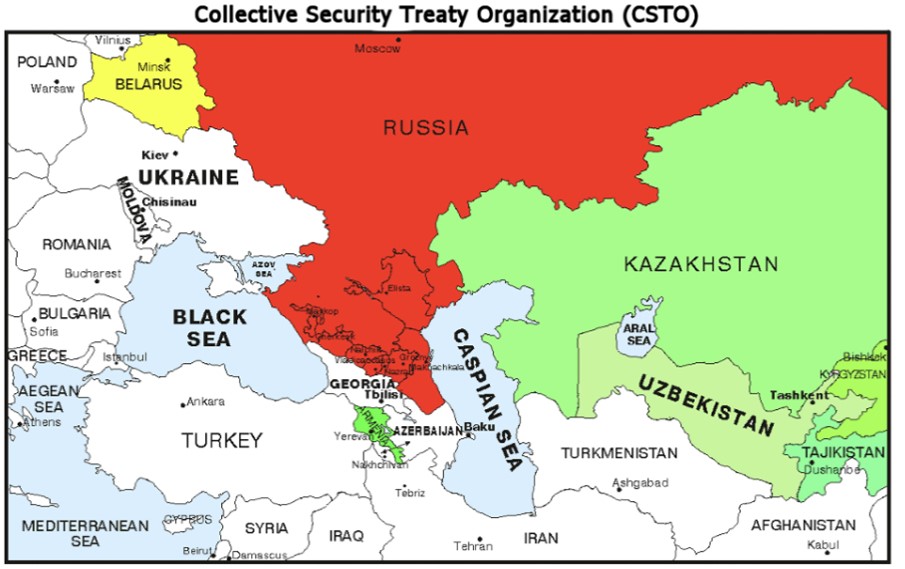
Source:
Image Source:
India’s booming smaller cities: HBL
Essence: One of the major outcomes of the pandemic is the Work from Home (WFH) culture which has resulted in returning of the working population to the tier-2 and tier-3 cities. The ‘big cities’ exodus is mainly led by the IT sector and being followed by engineering- service firm, start-ups etc. The companies are expanding their facilities to smaller cities and are supported by incentives given by the state government.
Technology along with eating out and entertainment options are playing major role in booming these smaller cities. Also, with many companies in a single tier 2 or 3 city, job switching option is also available for the employees like they had in big cities. The article highlights that Modern India’s corporate sector will not be limited only to few big cities now.
Why to read this article?
- To understand that, one of the major outcomes of pandemic- WFH culture has led to the booming of Tier 2 and 3 cities.
- The article in most lucid language with excerpts of interviews of CEOs of some companies, tries to explain how pandemic is changing the face of Modern India Corporate sector.
- COVID and Post COVID developments are very important in all sections and sectors of society from the examination point of view (This article specifically for GS 1 Urbanization and related issues, GS III, Work Culture- GS IV and Essay).
Source:
Omicron lends a new thrust to the hybrid work model: HBL
Essence: The article talks about the pros and cons of Work from Home model of working which is becoming a new normal these days. While for few it is just a temporary fix and is incapable of providing synergies and social connect that an office space provides. On the other hand, it has provided opportunity to large chunk of women to work with flexibility of location and work schedules.
Business houses are in flux with regards to designing the new working model. Some business leaders are of view that strict return to office mandates would make certain employees go restless. The presence of technology could enable providing hybrid model of working to the employees with flexibility of work from home and office. Ultimately the corporates should brace themselves to derive results in the uncertain environment. The employees would look forward to hybrid model of working where flexibility would be provided to them to work form office and home.
Why you should read this article?
- To understand the pros and cons of Work form home way of working.
- To understand why the companies need to brace themselves
Source:
The US-Russia Tango and the Indo-Pacific: HT
Essence: The editorial discusses the dynamics between USA and west on one side and Russia on the other, trying their best to normalize the war-like situation at Russia-Ukraine border. Russia has amassed huge military strength at Ukraine border and is alleged to conduct a separatist movement in east Ukraine. On the other hand, western forces have warned Russia of consequences “like none ever seen” in case of Russian aggression.
Amongst Russian demand are restriction on NATO’s influence on east Europe and central Asia, no overlap of regions of military exercises conducted by USA and Russia and blocking of certain weapons to be delivered to Ukraine. Both the countries want to reach a settlement- neither are keen or could afford a war. But the threat to escalation plays key factor. Resolving the issue in Europe would lead to a change in geo-political dimensions in Asia- away from China and in favor of India.
Why you should read this article?
- To understand the contentions of the disputing parties amidst Russia-Ukraine crisis.
- To know the strategies being used to avert the immediate danger of war.
- To understand the effect of negotiations on Indo-Pacific region.
Source:
Birdhouse to Withstand Vagaries of Nature
Background
Even as many people put water pots for the birds, Bhagvanji (farmer in Jetpur, Gujrat) has constructed a bird house with 2,500 pots that can withstand the vagaries of nature in all seasons.
Work done by Bhagvanji Rupapara
- Bhagvanji Rupapara was inspired by small birdhouses to build a unique contraption for his feathered friends.
- The belief of Bhagbanji that all living beings must be treated equally, made him build a birdhouse to provide a safe shelter for birds and protect them from harmful weather conditions.
- For building the birdhouse, Bhagvanji spent Rs 20 lakh, which is 140 feet long, 70 feet wide and 40 feet high.
- He build the birdhouse on his plot of land which was given to him by the Panchayat.
- Apart from the shelter, the 75-year-old also provides food and water to these birds.
- Such acts of kindness help raise awareness about the ecological importance to conserve these species.

Quote: “God loved the birds and created trees, humans loved the birds and created cages”
-Jacques Deval
Source:
Share the article
Get Latest Updates on Offers, Event dates, and free Mentorship sessions.

Get in touch with our Expert Academic Counsellors 👋
FAQs
UPSC Daily Current Affairs focuses on learning current events on a daily basis. An aspirant needs to study regular and updated information about current events, news, and relevant topics that are important for UPSC aspirants. It covers national and international affairs, government policies, socio-economic issues, science and technology advancements, and more.
UPSC Daily Current Affairs provides aspirants with a concise and comprehensive overview of the latest happenings and developments across various fields. It helps aspirants stay updated with current affairs and provides them with valuable insights and analysis, which are essential for answering questions in the UPSC examinations. It enhances their knowledge, analytical skills, and ability to connect current affairs with the UPSC syllabus.
UPSC Daily Current Affairs covers a wide range of topics, including politics, economics, science and technology, environment, social issues, governance, international relations, and more. It offers news summaries, in-depth analyses, editorials, opinion pieces, and relevant study materials. It also provides practice questions and quizzes to help aspirants test their understanding of current affairs.
Edukemy's UPSC Daily Current Affairs can be accessed through:
- UPSC Daily Current Affairs can be accessed through Current Affairs tab at the top of the Main Page of Edukemy.
- Edukemy Mobile app: The Daily Current Affairs can also be access through Edukemy Mobile App.
- Social media: Follow Edukemy’s official social media accounts or pages that provide UPSC Daily Current Affairs updates, including Facebook, Twitter, or Telegram channels.





